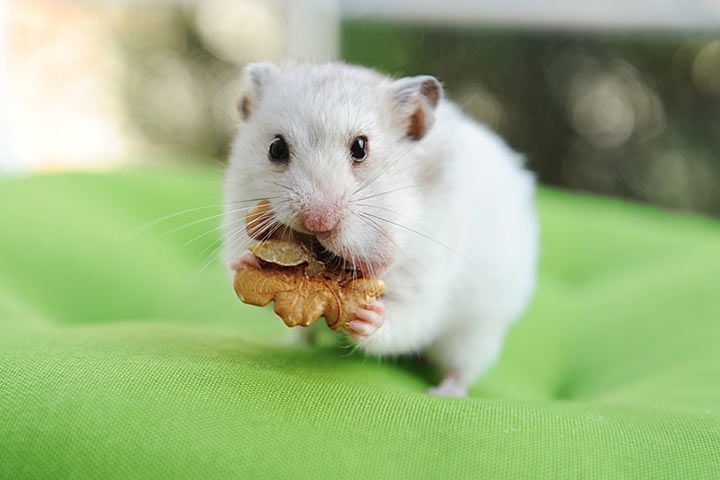Chinese Hamster: An In-Depth Profile
The **Chinese Hamster**, known scientifically as *Cricetulus griseus*, is a beloved species in the realm of laboratory research and pet ownership alike. This small, friendly rodent boasts a rich history that makes it a unique and valuable part of both the scientific community and the world of small pets. In this profile, we’ll explore various aspects of the Chinese Hamster, including its characteristics, care requirements, and contributions to science.
Characteristics of the Chinese Hamster
The Chinese Hamster is generally smaller than other hamster breeds, typically weighing around 120 to 160 grams and measuring about 10 to 12 centimeters in length. Its distinctive body form is longer and less stocky compared to other hamsters, lending it a quick and agile demeanor. The coat is usually a mixture of light brown and gray, featuring a softer texture that enhances their appealing appearance.

Appearance and Behavior
Distinguished by its sleek body and long tail, the Chinese Hamster possesses a playful and curious nature. They are known for their nocturnal behavior, being most active during the night. In terms of socialization, they can thrive either in solitude or with a companion, although overcrowding should be avoided to prevent territorial disputes. Their inquisitive nature makes them fun to watch and interact with.
Species Variations
Within the Chinese Hamster species, there exist two primary varieties: the wild type, which has a standard coat color, and the piebald variety that features unique white patches. These variations offer a delightful aesthetic choice for pet owners. Each variant exhibits similar behaviors and temperaments, making them equally suitable as pets in various environments.
Care Requirements for Chinese Hamsters
Taking care of a Chinese Hamster is relatively straightforward, yet it requires attention to detail to ensure optimal health and well-being. These hamsters need a suitable habitat, a balanced diet, and regular interaction to lead a fulfilling life. Their care requirements play a critical role in their longevity, which can range from 2 to 3 years, depending on the conditions in which they are kept.
Habitat Setup
Creating a comfy habitat for a Chinese Hamster begins with selecting an appropriate cage. A spacious cage with adequate ventilation and solid flooring is ideal. Hamsters enjoy burrowing, so providing bedding material like aspen shavings or paper-based products can enrich their environment. Remember to include tunnels, wheel structures, and chew toys to promote their natural instincts and provide mental stimulation.
Dietary Needs
A well-balanced diet is crucial for maintaining the health of Chinese Hamsters. They primarily need commercial hamster pellets as a foundation, supplemented with fresh vegetables, fruits, and occasional treats. Avoid high-sugar items and overfeedings, as obesity can lead to health complications. Ensuring a balance of protein and fiber in their diet will keep them active and healthy.
Chinese Hamsters in Research
The significance of Chinese Hamsters extends far beyond that of cute pet companions. They play a vital role in scientific research, particularly through their use in creating Chinese Hamster Ovary (CHO) cells, which are pivotal in biopharmaceutical production. These cells have revolutionized the field of genetics and biotechnology, emphasizing the importance of this species within laboratory settings.
Contributions to Science
CHO cells are extensively utilized for producing recombinant proteins, a major factor in vaccine development and therapeutic drugs. Research institutions have harnessed these cells due to their ability to grow rapidly and produce high yields of proteins. The Chinese Hamster’s genome also contributes to understanding processes such as cellular response to stress and disease mechanisms.
Future of Research Using Chinese Hamsters
As science progresses, the role of Chinese Hamsters in research will likely expand. Studies continue to investigate their genetic makeup, leading to advancements in understanding complex disorders and treatments within various medical fields. This underscores not just their utility in current research but the potential for future breakthroughs through continued study of this remarkable species.
Key Takeaways
- Chinese Hamsters are small, agile rodents known for their longevity and ease of care.
- They have a significant role in scientific research, particularly in biotechnology.
- Creating a proper habitat and balanced diet are essential for their health and well-being.
- The ongoing research into their genome showcases their potential for future medical advancements.
FAQ
1. What are common health issues in Chinese Hamsters?
Chinese Hamsters may experience dental problems, obesity, and fur loss due to stress or poor nutrition. Regular vet check-ups, a balanced diet, and maintaining a clean living environment can help mitigate these issues.
2. Can Chinese Hamsters live together?
Chinese Hamsters can coexist if introduced at a young age. However, adult males, in particular, can become territorial. It is best to monitor their interactions and separate them if aggressive behavior occurs.
3. What is the lifespan of a Chinese Hamster?
On average, a Chinese Hamster lives between 2 to 3 years, dependent on genetics, care, and environment. Efficient care and a healthy diet can support their longevity.
4. How often should I clean my Chinese Hamster’s cage?
A cage should be cleaned at least once a week to prevent an accumulation of waste and odor. Spot cleaning daily is a good practice to maintain hygiene and a comfortable habitat for your hamster.
5. What types of toys are best for Chinese Hamsters?
Chinese Hamsters enjoy a variety of toys, including tunnels, chew toys made from safe materials, and exercise wheels. These not only provide entertainment but also encourage physical activity and mental stimulation.
